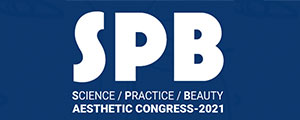Objectives: The main aim of the scar treatment is to have a good aesthetic result, restoration of functional activity in the scar zone and, of course, satisfied patient. In this report we tried to analyze our success and failures based on the pathophysiologic aspects and stages of wound healing process.
Introduction: In everyday practice dermatologists meet patients with scars. The main aim of the treatment is to minimize the scar or to replace the scar tissue by healthy one completely. To reach the best aesthetic results we should use the combination of different approaches according to the etiology, the stage of the wound healing process and histologic type of the scar. There is no scar treatment consensus or common protocols accepted. But according to knowledge in pathophysiology we understand what methods should be used in different stages of wound healing process to avoid pathological scars and to
Materials / method: In this report we introduce clinical cases of combined scar treatment using physiotherapy (microcurrent technology, LDM technology, lymphatic drainage methods) and laser methods (IPL, Er-Glass, CO2), injections (mesotherapy with hyaluronic acid, aminoacids, vitamins, antioxidants, collagen, botulinum toxin) and topical treatments. The methods are well-known, but what is the best way to combine them… This is our experience in combined treatment of different types of cicatritial changes according the type of scar, the time of its existence, the localization.
Results: In this report we’ll see different methods of treatment in terms of clinical cases. In all cases we used combined treatment: physiotherapy, laser treatment, injections in different combinations and local treatment with topical solutions.
Conclusion: Today we have a lot of combinations of treatment cicatrificial tissue, which help us minimize or totally displace almost every type of scar deformation. The key to successful scar treatment is the early beginning and right combination of methods based on the pathophysiology of wound healing process.
Divulgação de informações
Você recebeu algum patrocínio para sua pesquisa neste tema?
Não
Você recebeu algum tipo de honorário, pagamento ou outra forma de compensação por seu trabalho neste estudo?
Não
Você possui relação financeira com alguma entidade que possa competir com os medicamentos, materiais ou instrumentos abordados no seu estudo?
Não
Você detém ou pediu a registro de patente para algum dos instrumentos, medicamentos ou materiais abordados no seu estudo?
Não
Este trabalho não recebeu nenhum patrocínio direto ou indireto. O mesmo está sob a própria responsabilidade do seu autor.










